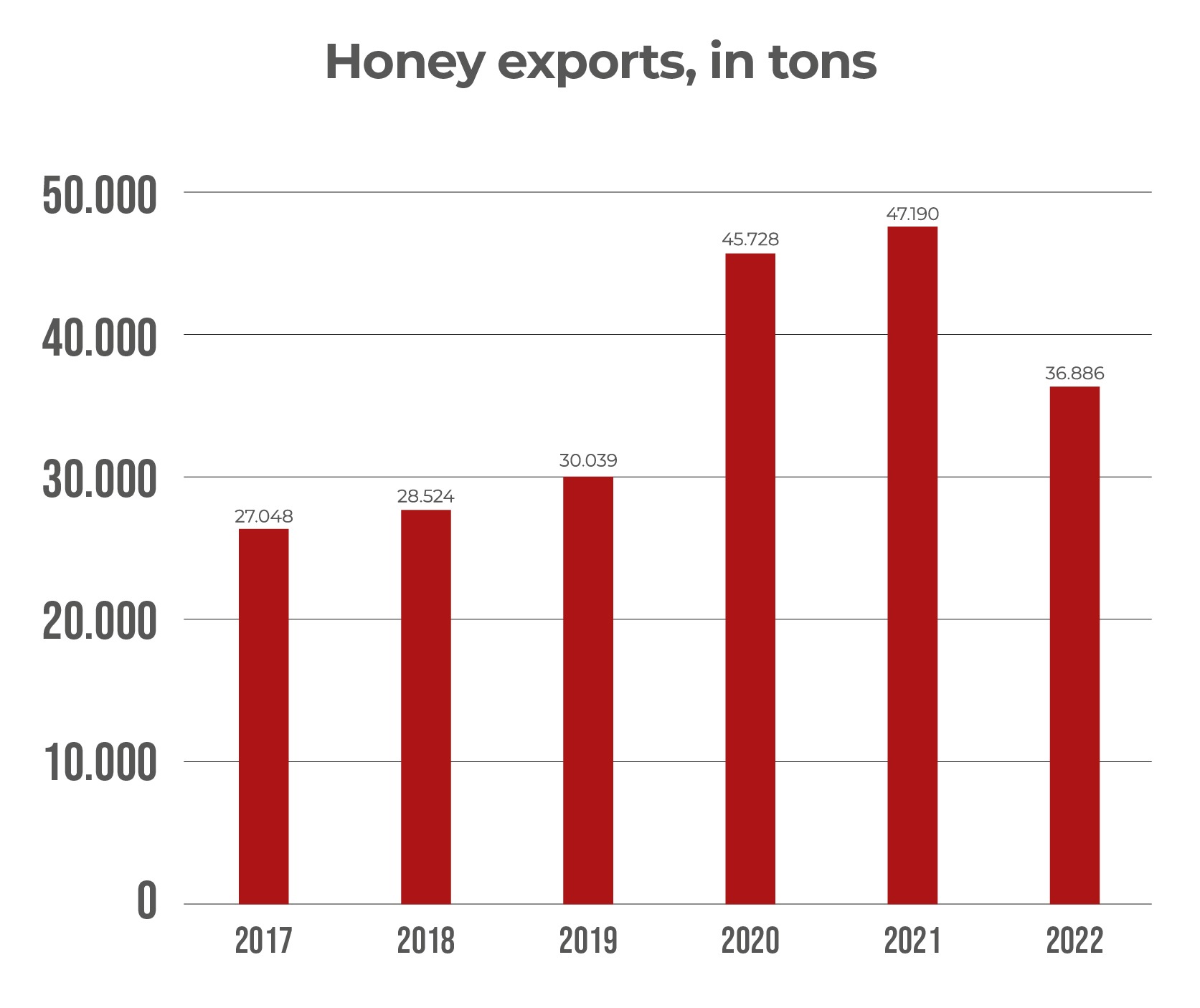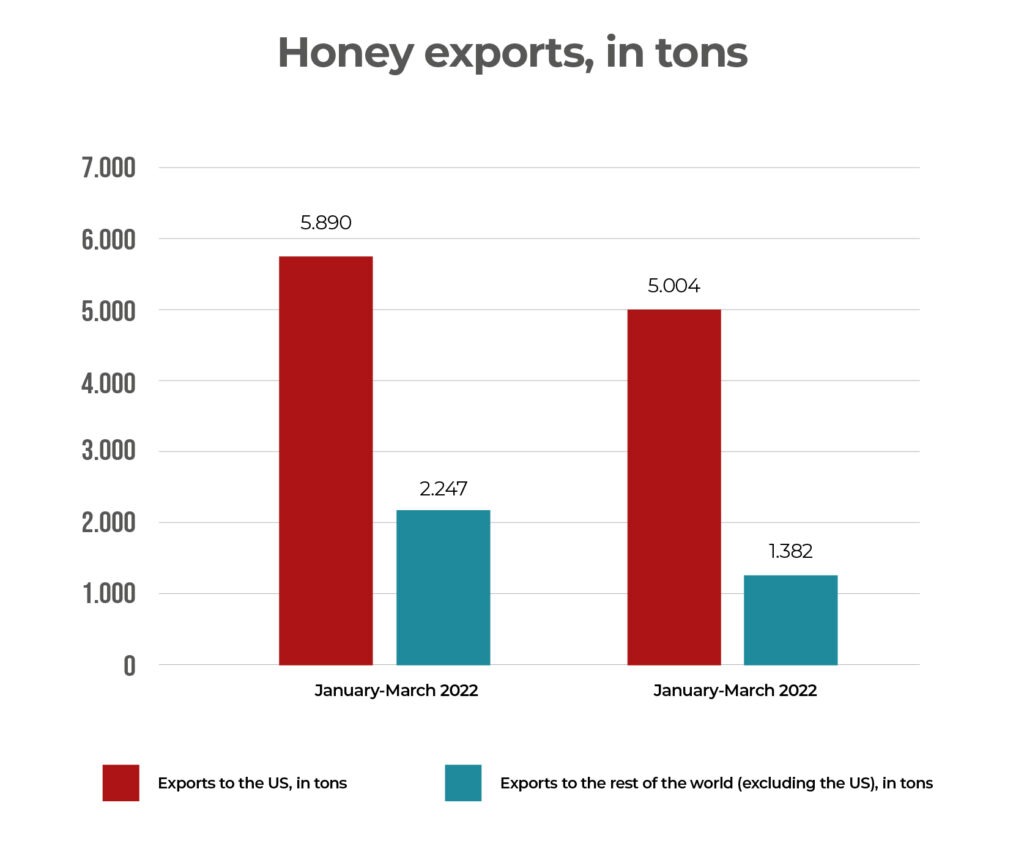Blog
Apidouro
The price of honey
06/12/2023
In this year of 2023, many beekeeping professionals, intermediaries, and even exporters have been questioning the reason behind the reduction in honey prices in the market. Various theories arise to try to explain the market movement, however, the truth is that there is no single explanation. The answer is also not simple and requires a detailed analysis over time. In this article, we will explore a logical explanation based on data and publicly available information to understand what is happening in the market.
Did the antidumping process affect the price of honey?
When analyzing the antidumping process in the United States, often cited as one of the factors responsible for the decline in honey prices, it is important to mention the case that occurred in 2021. Two American beekeeping associations accused countries such as Argentina, Brazil, India, Ukraine, and Vietnam of engaging in dumping practices by selling bulk honey to the US. As a result, they requested the imposition of import tariffs on honey from these countries. This process brought uncertainties to the market and impacted the expectations of honey demand and supply. However, it is important to note that other factors also play a role in this complex situation, and a detailed analysis is necessary to fully understand what is happening.
The application of tariffs took place after the process, with established percentages for each country: Vietnam (412.29%), Ukraine (18.68%), Argentina (16.06%), Brazil (9.38%), and India (6.48%). In the market, a surprise occurred: the price of honey from the main suppliers to the US increased considerably due to the tariffs, while Brazil received a lower rate. Thus, Brazil is in a favorable position in terms of price compared to Argentina, Ukraine, and Vietnam. However, it is important to note that tariffs are not the sole explanation for price variations in Brazil. Additionally, differences in freight costs between India and Brazil to the US also need to be considered, which may diminish India's competitive advantage. In summary, the US antidumping action did not have the initially expected impact on honey prices.
Did the fluctuation of the dollar affect the price of honey?
Furthermore, another important factor to consider is the fluctuation of the dollar, which is widely used as a reference for honey prices. As over 70% of honey produced in Brazil is exported, any changes in the value of the dollar directly affect the price of the product in the field. However, it is important to highlight that exchange rate fluctuation is not the sole element responsible for the recent price decline. In the international honey trade, exporters establish a maximum value they can pay for honey in the field, taking into account their fixed and variable costs, such as infrastructure, quality control, freight, among others. When there is a devaluation of the dollar, this limit is reduced as the same dollars become worth less in Brazilian reais. On the other hand, when the dollar appreciates, the limit increases. However, exporters' profit margins are not as large as one might think.
According to the Ministry of Industry, Foreign Trade, and Services, the average export price of honey in 2023 is US$ 3.53/kg, which, considering the average exchange rate of R$ 5.05, results in R$ 17.83/kg. This value must cover various costs, such as freight, labor, documentation, warranty, losses, customer credit, taxes, and other commercial expenses, in addition to ensuring exporters' profits. Thus, the price of honey in the field represents a significant portion of the total value of the exported product and is directly affected by fluctuations in the exchange rate. However, it is important to note that there has not been a significant variation in the exchange rate recently to justify the observed price decline in the market. Therefore, the "exchange rate" factor alone does not fully explain the current situation.
The Demand Factor
We need to redirect our attention to the demand factor in order to understand what has been influencing this decline. Globally, we have observed a decrease in the demand for honey. This trend can be understandable when we analyze the demand data between 2017 and 2022.
"Chart 1" shows how exports behaved during this period:

It is interesting to note that there was a significant increase in demand during the most challenging years of the COVID-19 pandemic in 2020 and 2021. During this period, people around the world adopted new eating habits, reducing social interactions and consuming more meals at home, while increasing their focus on health. Honey, known for its immune-boosting benefits and association with health, experienced a significant surge in demand. As the world progressed in fighting the pandemic, with the rollout of vaccines and the weakening of virus strains, we gradually returned to our pre-pandemic routines. We resumed social activities, travel, and dining out. This return to our old practices had an impact on the demand for honey.
I believe that we are simply returning to a scenario of pre-pandemic consumption habits and that the exceptional demand observed in 2020 and 2021 was out of the ordinary. This atypical demand resulted in unusual price variations during this period, with an increase in honey prices in the field. This increase can be explained by the high demand during the pandemic, along with currency fluctuations. For example, the average exchange rate of the dollar, according to the Central Bank, varied from US$ 1 = R$ 4.26 in January 2020 to US$ 1 = R$ 5.93 in May of the same year, a variation of 39% in a little over three months. The appreciated dollar, along with the sudden and unpredictable demand for honey, created a favorable scenario for price increases in the field. Looking back and considering all the events, it is reasonable to understand that what we experienced in 2020 and 2021 was part of a specific context.
Currently
Currently, the price variations of "honey in the field" are mainly a result of this new consumer behavior and are not directly related to the exchange rate or the antidumping process in the US. If it were solely a matter of exchange rate, the price reduction would be more modest and would not be accompanied by a decline in demand. Furthermore, the antidumping process is not the sole factor, as sales to other countries unaffected by this process have also been impacted.
"Chart 2" shows that exports to the US have suffered less than exports to other locations, debunking the claims that the antidumping process would be responsible for the current market variations:

Sales to the United States, which has antidumping tariffs against Brazil, have experienced a decline of 15%, while exports to other countries without antidumping tariffs have suffered an even larger decrease of over 38%.
However, this decline in demand is not exclusive to Brazil. Countries like New Zealand, Poland, and Hungary have also seen a decrease in their export volumes. India and Ukraine have not yet released their 2022 export numbers. On the other hand, Argentina, our neighbor, experienced a growth of 5% in 2022, although it has had ups and downs in recent years and did not see an increase in exports during the pandemic.
Conclusion
The key question we need to answer is what can we expect for the future. If there are no significant changes in the global landscape, it is believed that exports will stabilize at levels similar to pre-pandemic times. This means that export volumes are expected to range between 36,000 and 42,000 tons in 2023, approximately. Prices are likely to adjust to this new post-pandemic demand.
However, when it comes to the future, the only certainty is that nothing is certain. Despite this, I still believe that we have fertile ground to value our product, both in Brazil and abroad. Those who have already embraced honey in their diet are likely to continue consuming it. Brazilian organic honey remains a remarkable differentiator that we possess. Its taste and quality are incredible, with the ability to win over anyone who tries it. Therefore, I trust that the future scenario will be similar to what beekeepers experience daily: despite facing some difficulties, in the end, it is the sweet taste of honey that will leave its mark on us.
